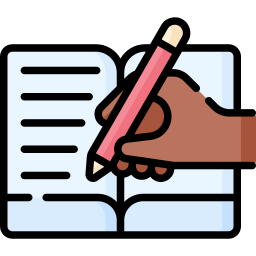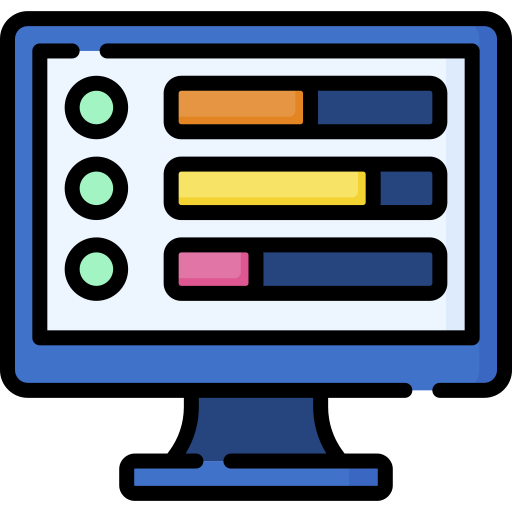Assessment
Excellence in teaching and learning emphasizes assessment and reflection for enhanced student learning. Through assessment and reflection students develop into independent, creative and critical thinkers. Faculty provide a variety of tools and strategies to evaluate learning outcomes, allowing all students to excel and demonstrate enduring understanding of course content. Faculty welcome and solicit student and peer feedback to reflect on their teaching practices for continual improvement.
- Incorporate summative and formative techniques to assess course learning outcomes
- Utilize authentic assessment strategies to assess course learning outcomes
- Reflect on continuous feedback for continuous improvement
- Align learning outcomes with assessment strategies
- Apply a data-driven approach to teaching and learning
Formative Assessment
Formative assessments provide a means to monitor learning and provide ongoing feedback in the classroom. The feedback is valuable to both the students and the instructor. These assessments are often low stakes or have no points associated with them and usually do not directly impact a student’s grade in the course. They are designed give the students information on how they are progressing in their learning of the concepts.
Students can use this information to determine if they understand the learning outcomes and reflect upon their next steps. Instructors can use this same information to determine the next steps in their teaching, i.e., should they stay on this topic longer, is another example needed, etc. Formative assessments are used more often than summative assessments and are far more flexible to needs of each individual class.
Below are some recommended course offerings that help faculty learn more about formative assessment.
Examples of Formative Assessment

Having students write on a topic for one minute to reflect on their understanding

Using polling software to gauge understanding

Having students work in pairs or small groups to discuss a concept

Drawing a concept map to visualize understanding
Summative Assessment
Summative assessments are used to evaluate student’s level of mastery of the learning outcomes associated with the course. These assessments have point values and are outlined in the course syllabus and are used to determine a student’s grade. Summative assessments can include quizzes, exams, and research papers. In addition to these traditional evaluation methods authentic assessments can also be used to determine how well a student has learned the course material.
Authentic assessments focus on the application what students have learned in the course. The assessments allow the students to use the information and skills that they have gained in the course. Authentic assessments often require the student to produce a high-quality product that requires complex tasks and are tide to real-world applications.
Below are some recommended course offerings that help faculty learn more about all types of summative assessments including authentic assessments.
Examples of Summative Assessment

Conducting a research project for a science course

Building a mobile application for a computer science course

Recording a podcast for a history course
Rubrics
Rubrics are an essential tool for both instructors and students that outline the criteria on which an assessment is evaluated. In addition to the criteria, rubrics contain a scale that rates the quality of the criteria as well as scores associated with the scale.
Rubrics are valuable to both instructors and students. For students, rubrics clearly communicate the expectations and components of an assignment. For instructors, the rubrics make evaluating assignments easier and less subjective. After the assessment has been evaluated using the rubric, it also provides the student with immediate feedback. The feedback is clear and targeted to specific aspects of the assignment.
The following rubric is used to measure students’ critical thinking skills across all general education course areas as part of Broward College’s general education assessment process.
| Criteria | Exceeds Competency | Demonstrates Competency | Approaches Competency | Below Competency |
|---|---|---|---|---|
| Explain questions, problems, and/or issues | Clearly states and describes the hypothesis, question, problem, or issue in a way that demonstrates a comprehensive understanding and provides all relevant information necessary for full understanding of the hypothesis, question, problem, or issue. | States and describes hypothesis, question, problem, or issue in a way that demonstrates a fundamental understanding and provides relevant information necessary for a general understanding of the hypothesis, question, problem, or issue | States but does not describe the hypothesis, question, problem, or issue in a way that demonstrates a fundamental understanding, nor provides relevant information necessary for understanding the hypothesis, question, problem, or issue | Does not state and/or describe the hypothesis, question, problem, or issue |
| Analyze and interpret relevant information | Clearly identifies and systematically breaks down the purpose, argument, information, or key idea/concept/term, using relevant factors to offer in-depth insights | Identifies and breaks down the purpose, argument, information, or key idea/concept/term, using relevant factors to offer insights | Identifies, but does not break down the purpose, argument, information, or key idea/concept/term, using relevant factors to offer insights | Does not identify or break down the purpose, argument, information, or key idea/concept /term |
| Evaluate information to determine potential conclusions | Thoroughly assesses and questions the credibility or significance of the purpose, argument, information or key idea/concept/term to determine potential conclusions | Assesses and questions the credibility or significance of the purpose, argument, information or key idea/concept/term to determine potential conclusions | Assesses and questions the credibility or significance of the purpose, argument, information, or key idea/concept/term, but not enough to determine potential conclusions | Does not assess or question the credibility or significance of the purpose, argument, information, or key idea/concept/term to determine potential conclusions |
| Generate a well-reasoned conclusion | Conclusion is comprehensive, logical and reflects the ability to thoroughly integrate thoughts relevant to the stated hypothesis, question, problem, or issue | Conclusion is sufficient, logical and reflects the ability to integrate thoughts relevant to the stated hypothesis, question, problem, or issue | Conclusion is somewhat logical and partially reflects the ability to integrate thoughts relevant to the stated hypothesis, question, problem, or issue | Conclusion is inconsistent and does not reflect the ability to integrate thoughts relevant to the stated hypothesis, question, problem, or issue |
While students work on an assessment, they can use the rubric to self-evaluate and reflect upon the quality of their work and make any needed adjustments. While primarily used for summative assessments, rubrics can be used for formative assessments such as peer review of student work.
Browse our recommended course offerings that help faculty learn how to create and use rubrics below!
ACUE
ACUE is an association we are partnered with that prepares, credentials, and supports faculty to teach with research-based best practices that improve student achievement and close fairness gaps. Out of all their courses, we recommend taking their Designing Student-Centered Courses microcredential if you would like to learn more about assessment.
Assessment in General Education
The College Assessment Team for Student Success (CATS) coordinates and facilitates the assessment process in determining if students are achieving the student learning outcomes of our General Education, Career and Technical Education, and discipline-specific programs. Visit the link below to learn more.
